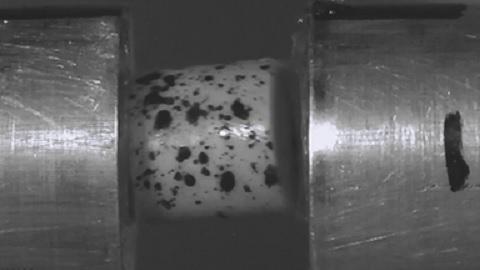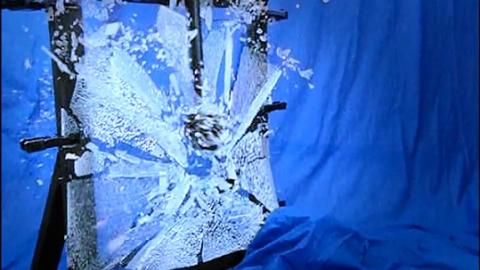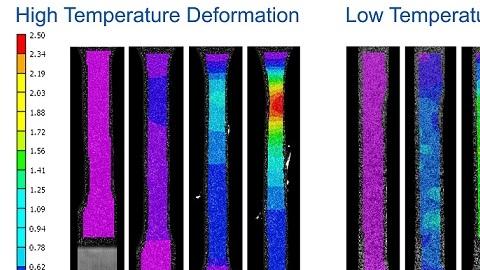Veryst Engineering uses high speed videos to record impact and high strain rate events. Our high strain rate tests may last for 5 ms or less, and typical cameras cannot capture events at those time intervals. Our test lab has cameras and lighting systems capable of recording video above 100,000 frames per second.
The video in Figure 2 shows a specimen during a high strain rate tensile test.
The specimen simultaneously breaks at two points in the gage section, and the piece rotates in the plane of the specimen. The broken portion appears to float in the video due to the short duration of the video.
Two additional high speed videos are shown below. The video in Figure 3 shows an impact double cantilever bending (DCB) test to measure the high strain rate failure of an adhesive. We measure the mode I toughness with the DCB test, and measure the mode II toughness with the end-notched flexure test. See an example of calibrating a cohesive zone model for an adhesive.
The video in Figure 4 shows a ball impact test on a polymer foam sample.


